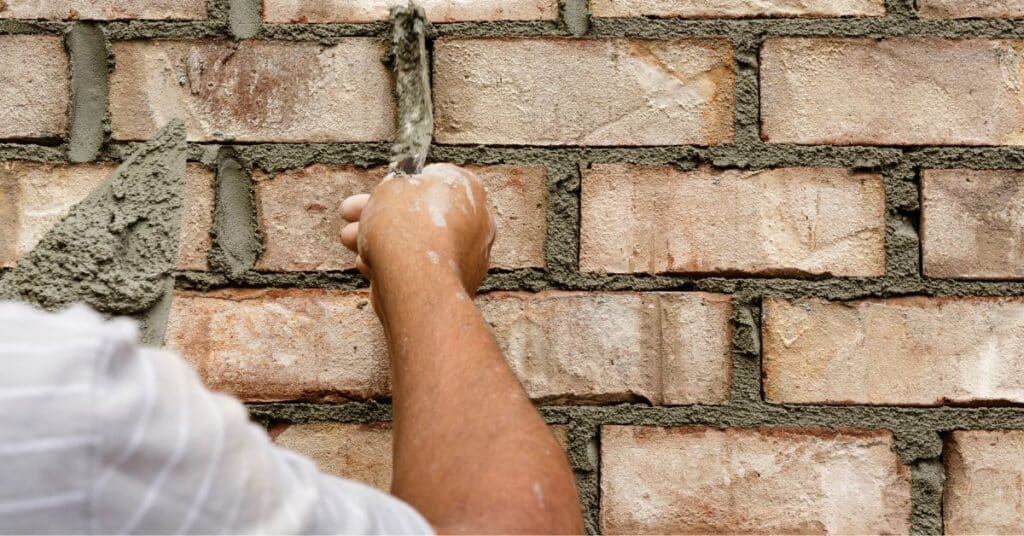What Is Tuckpointing?

Table of Contents
Tuckpointing is a repair process used in masonry to renew the exterior of mortar joints. Mortar is the paste that binds bricks, stones, or concrete together by filling in the gaps between them. Over time, exposure to the elements and the damaging effects of water can cause the mortar in the joints between bricks or stone to deteriorate. When this happens, tuckpointing is often used to improve the masonry’s structural health and appearance.
Tuckpointing can be labor-intensive, requiring a lot of skill to do correctly. The team at The Mad Hatter has ample experience and patience to ensure your tuckpointing job is done correctly. Tuckpointing can significantly extend the life of a masonry structure and improve its appearance. It’s often a part of regular maintenance for brick buildings and structures, including chimneys.
What Is The Process For Tuckpointing?
Removal of old mortar: The first step in tuckpointing is to remove the existing, damaged mortar. This is usually done to a certain depth using a grinder or a unique tool.
Cleaning the joints: Once the old mortar has been removed, the joints must be cleaned to ensure that the new mortar will adhere properly. This is usually done by blowing out the dust and debris with air.
Application of new mortar: New mortar is then applied to the joints using a “pointing trowel” tool. The mortar is pushed into the joints to fill them up.
Tooling or finishing: After the new mortar has been applied, it needs to be finished or “tooled” to match the style of the existing joints. This usually involves shaping the mortar and smoothing it out.
Curing: The new mortar needs to be kept damp for a few days to cure properly. This allows the mortar to harden and achieve its full strength.
What Are The Benefits of Tuckpointing?
Structural Integrity: The primary benefit of tuckpointing is that it restores and maintains the structural integrity of a masonry structure. Replacing worn-out mortar with new mortar reinforces the strength of the entire structure. This can also help prevent bricks from loosening and falling.
Prevention of Further Damage: If your chimney is already damaged, tuckpointing can help prevent further damage by sealing off the points of entry from water that can lead to severe issues like mold, mildew, or structural damage.
Aesthetic Appeal: Another benefit of tuckpointing is that it can significantly enhance the visual appeal of a structure. The process can make an old, worn-out chimney look fresh and new again.
Increases Property Value: If you plan to sell your property, tuckpointing can help increase its value. Well-maintained, tuckpointed chimney and masonry is a selling point for potential buyers.
Cost-effective: While there is an upfront cost, tuckpointing is cost-effective in the long run. It is much cheaper than allowing your masonry work to degrade to the point where it needs to be replaced entirely.
Improved Insulation: Tuckpointing can improve the insulation of your building or home to help maintain a more stable indoor temperature. This can also lead to savings on your energy bill.
Longevity: Tuckpointing extends the life of a masonry structure by maintaining the mortar joints.
In summary, tuckpointing is an investment in the longevity and quality of your masonry work. It’s an important aspect of building maintenance that can save time, money, and effort in the long run.
Schedule Tuckpointing Service With The Mad Hatter
From enhancing structural integrity to increasing property value and insulation, the benefits of tuckpointing service are clear. If your home needs tuckpointing, don’t wait until small issues become significant, expensive problems.
Contact the experts at Mad Hatter today for your tuckpointing needs. Our professional service and dedication to craftsmanship will ensure that your structure is in its best shape possible.
FAQ About Chimney Tuckpointing
How often do you need to tuckpoint a chimney?
he frequency of tuckpointing depends on several factors including the quality of the original workmanship, the type of mortar used, the type of bricks used, and the local weather conditions. Generally, a well-built brick chimney might need tuckpointing every 20 to 30 years. However, it’s good to inspect your chimney annually for signs of mortar deterioration.
How do you know if you need tuckpointing?
Signs that you might need tuckpointing include seeing crumbling or missing mortar in the joints between the bricks, visible cracks in the chimney, or a white, powdery substance (efflorescence) on the bricks which indicates water infiltration. You may notice bricks flaking or falling off the chimney in severe cases.
How long does tuckpointed moisture last?
The lifespan of tuckpointed mortar can vary depending on a range of factors including the quality of the workmanship, the materials used, the condition of the bricks, and the local weather and environmental conditions. However, generally, you can expect tuckpointed mortar to last anywhere from 20 to 30 years.
